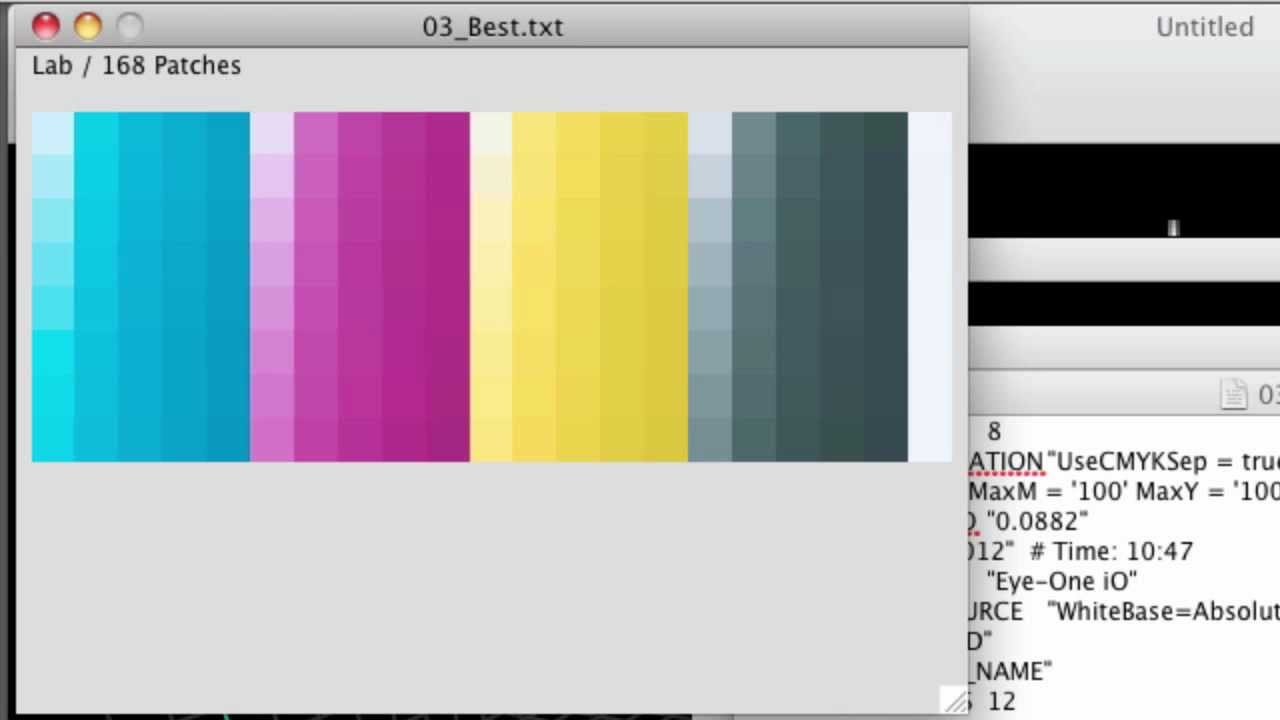I have successfully been setting my ink restrictions based on chroma for several years. I recently had a conversation with a colleague who threw me for a loop. His point was that this is ok as long as you don’t get see any hue hooking in at your high chroma value. Can anyone explain this more to me?
Hi Robert,
I believe your colleague is referring to the anomoly where, with increased inking, the hue deviates from its straight-line path of increasing chroma and a steady hue and begins to hook toward a different hue. This is most easily illusrated when plotting lab on a spider graph…or when viewing a profile in Colorthink using points joined with lines.
I usually see this more with secondary colors (r, g or b) rather than primaries (c, m, & y), particularly the blue, which I often see hook toward a redder or more cyan hue with increasing chroma.
If I’m off base, I’m sure someone will set me right, but I think this is the issue your colleague speaks of.
Mike
I have seen this with Cyan and Magenta when ink limiting inkjet. Cyan usually hooks to the blue side and Magenta to the red. Yellow can hook a bit to the red side, but it is not as pronounced as the others. If you look at a 2D spider plot, you don’t get the full picture. It looks like you reach a point where the hue hooks abruptly, or you simply stop gaining chroma as the inking increases. In a 3D view, you see that the ink begins to get darker while shifting hue. So you are actually gaining gamut beyond the hook or chroma cutoff, but the question is how valuable the gamut is. If you are interested in matching dark, out of gamut colors, it is helpful. If you are interested in better accuracy of matching Gracol, SWOP, or whatever your target is, setting the limits just outside of the gamut of your simulation profile is the way to go.
Bret
I guess my next question is this. When setting per channel ink restrictions, would you set your limit at max chroma regardless of hue hooking or would you go with a lower chroma that maintains the same hue?
Edit: I should add that I am not doing any simulation proofing. I am looking for maximum gamut.
Since you are going for max gamut, limit the inks as little as possible. As I said before, you can still be gaining gamut after the hue hooks or the chroma stops going up. Look at a 3D graph of your linearization chart to see what is best for ink limits. If there is a hard break in the line, or if the points start to fall on top on one another, you’ll want to limit before that point.
You should use a large profiling chart if you are going to really push the ink limits. Standard charts like the IT8.7/4 don’t have many patches above 85%, so you might be better off with a bigger profiling chart to capure the full shape of the gamut.
In addition to what Bret said, consideration might also be give to the overall effects of ink restricting. Lessening the hook could mean loss of chroma in another hue.
Thanks for the help as always gentlemen.
Robert
Hi Robert,
I believe your colleague is referring to the anomoly where, with increased inking, the hue deviates from its straight-line path of increasing chroma and a steady hue and begins to hook toward a different hue. This is most easily illusrated when plotting lab on a spider graph…or when viewing a profile in Colorthink using points joined with lines.
I usually are this more with secondary colors (r, g or b) rather than primaries (c, m, & y), particularly the blue, which I often see hook toward a redder or more cyan hue with increasing chroma.
If I’m off base, I’m sure someone will set me right, but I think this is the issue your colleague speaks of.
Mike
-----Original Message-----
From: Robert Fulford
To: PrintProfilingForum@colorforums.com PrintProfilingForum@colorforums.com
Sent: Thu Feb 19 13:08:57 2009
Subject: Hue Hooking
I have successfully been setting my ink restrictions based on chroma for several years. I recently had a conversation with a colleague who threw me for a loop. His point was that this is ok as long as you don’t get see any hue hooking in at your high chroma value. Can anyone explain this more to me?
Post generated from email list
I like your question and I’ve done some exhaustive testing on this. While limiting ink restrictions to chroma hooks is important for G7 press calibration, I have found it to be detrimental when calibrating processes where we’ll wind up converting images to with a custom profile. Limiting ink restrictions to chroma hooks is important when calibrating to a specification like SWOP, since images will be converting using a generic SWOP profile. What I’ve found is that when we’re using custom profiles for our final output device it compensates for these hooks. These hooks don’t cause a problem at all - in fact they allow access to greater color gamut. When the color space conversions are performed the colors are placed where they should be and the quality is excellent. My testing points to continuing ink restrictions with to the chroma plateau - and least for non offset process.

